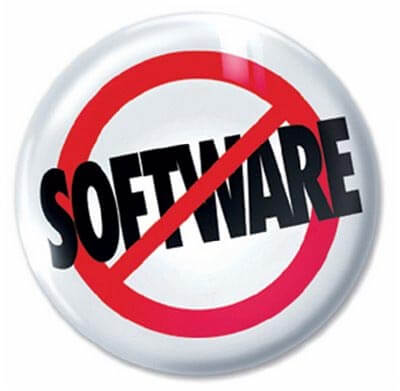Change Your Language
- Gaurav Rastogi
- 28 Aug. 2018
“Words are things...Some day we’ll be able to measure the power of words. I think they are things. They get on the walls. They get in your wallpaper. They get in your rugs, in your upholstery, and your clothes, and finally in to you”. - Maya Angelou
When you want to introduce yourself in a new light to your clients, you have to also change your words. These words must reflect your new identity, and you must be able to speak them out without hesitation. This takes practice. Especially losing the old language.
We’re discussing how your company needs to reintroduce itself to your clients frequently to avoid being put into the “friend-zone” that might prevent access to new business opportunities. There are six steps, discussed in my post here, and we’re on the fourth step. You can read the previous steps here, here, and here.
End of Software
It was 2000, and a new San Francisco startup came to the scene with a crazy new idea. The world of software had been doing rather well at the time, and large companies like Microsoft, SAP, Oracle and Siebel were printing and shipping CDs to clients by the boatloads.
But this company was interested in changing that cozy situation. They wanted to “end enterprise software”, which was a crazy idea because there were companies with billions of dollars of revenue that had no interest in dying and would not be swayed by this upstart. The company ran a fantastic campaign (End of Software, and later, No Software), and it’s central theme was that the software monopoly was bad for clients, and they needed a better way to run their companies. This startup created an entire industry, later called Software-as-a-Service, and it’s likely you know this company, Salesforce.com, and only faintly recall the giant company it went after- Siebel Systems. This was a powerful use of language to create a new market.
With just two words, “No Software”, Salesforce.com was able to change the way customers think about enterprise software and their buying habits.

Companies have deeply ingrained habits, when it comes to using words. The familiar language slips out of our mouth more comfortably than new language. But when you’re undergoing change, it’s very important to learn the new language and be comfortable with it. If the old pattern returns, then language doesn’t change, and the relationship doesn’t evolve.
Just Do It!
I recommend asking your team to send you the presentations they have used with clients over the last four weeks, as well as their key emails, and a recording of their client intro/demo calls, if possible. Listen carefully to the tone (see previous note), and also pay attention to the words that are being used most frequently across these media. If the language reflects your older positioning, then you have work to do in finding a new language and making it stick.
Find the words
This is the fun part, like going to a fashion store and trying out different clothes. Which words have a natural continuity with your past? What language can you use without feeling too self-conscious about the change? What words can you back with proof?
If you use the language with your customers and they play it back to you in the meeting, then you have found your language.
Make it stick: Make it Memorable, and Repeat, Repeat, Repeat
Now you have to simplify this language and create a whole sales playbook around it so that other people can become as good as you are. You will also have to model the behavior, and ask people to try out the pitches, presentations and personalizations so that the language is delivered with the same impact. This could include whiteboard training, conversation planning and also revisiting each of your decks to make sure that the old language is scrubbed out and the new language is seamlessly woven into them.
Many times clients consume the words before they can meet the company in person. Be sure to audit your website and other online channels to see that the language is consistent with your new positioning. If there’s a mismatch, clients will notice and call your bluff. Especially the “About Us” section, because people want to hear your story.
Choose your words wisely!
Read Other Notes
DIY Tip #5: Write the Executive Summary First
- Gaurav Rastogi
- 26 FEB. 2018
DIY Tip #4: Borrow your customers’ eyes
- Gaurav Rastogi
- 14 Feb. 2018
DIY Tip #3: Ask Clients This Question
- Gaurav Rastogi
- 08 Jan. 2018
DIY Tip #1: Sales Hiring Tip
- Gaurav Rastogi
- 28 Sep. 2017
Change Your Language
- Gaurav Rastogi
- 28 Aug. 2017
5 Reasons B2B Companies are Failing to Sell Digital
- Management
- 01 Aug. 2017
Change Your Story (the Airplane Seat Method)
- Gaurav Rastogi
- 22 May. 2017
Digital Selling Is A Finger Pointing to the Moon
- Gaurav Rastogi
- 13 Mar. 2017
What is a Company Website about
- Gaurav Rastogi
- 06 Feb. 2017
Reward the right behavior
- Gaurav Rastogi
- 06 Feb. 2017
Change Your Body Language
- Gaurav Rastogi
- 26 Oct. 2016
Minimize Relationship Risk
- Gaurav Rastogi
- 25 Oct. 2016
Change Your Self-Beliefs
- Gaurav Rastogi
- 25 Oct. 2016
Reintroduce yourself to your clients in six steps
- Gaurav Rastogi
- 25 Oct. 2016
We Have Bad News
- Gaurav Rastogi
- 14 Nov. 2015
We Have Great News
- Gaurav Rastogi
- 09 Nov. 2015
A Whole 'Nother Species- Homo Digitalis Salesus
- Gaurav Rastogi
- 07 Nov. 2015
